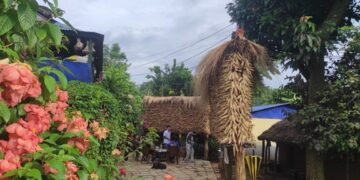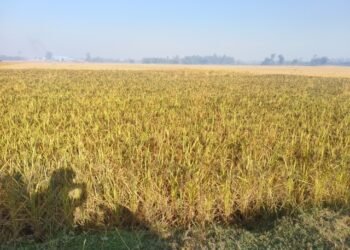Ranjha (Banke), Nov 20: The Kalanamak variety of rice is gradually disappearing in Banke as farmers are giving it less preference, citing low productivity.
According to farmers, this rice variety requires more care and greater access to irrigation. It is also highly vulnerable to pest attacks. As a result, farmers now prefer hybrid rice seeds over this indigenous variety, said Agriculture Knowledge Centre Banke’s information officer and senior crops development officer, Santosh Pathak.
Although Kalanamak rice remains a favourite among high-profile consumers and tourists, farmers have shifted to other varieties. This small-grained, aromatic rice has been overshadowed by hybrid varieties and commercial farming. Its cultivation has now reached almost zero. However, the Centre has decided to initiate its promotion.
This year, rice has been cultivated on 34,190 hectares of land, but Kalanamak and other indigenous varieties are not even recorded. The Centre has begun efforts to reintroduce their significance among farmers.
The Kalanamak plant is tall and prone to falling over. To address this, the Centre has introduced seeds with shorter plant height. Farmers have also been advised to maintain a proper balance of chemical fertilizers for better results.
Trial cultivation is being carried out on one hectare of land owned by Ganga Narayan Chaudhary of Titihariya, Baijanath rural municipality-8, Banke. Chaudhary said he plans to harvest the crop very soon, with an estimated yield of around 30 quintals. Despite challenges in its cultivation, there is no problem with market demand. Kalanamak sells at around Rs 10,000 per quintal, compared to Rs 3,500 per quintal for ordinary rice.
The high price is attributed to the elevated production cost, as the crop takes around six months to mature for harvesting.
Farmers in the area prefer hybrid varieties such as Ramdhan, Radha-4, MP-60, and Gorkhnath. Centre Chief and senior crops expert Binod Ghimire said that although the Centre is committed to promoting Kalanamak rice, farmers remain less interested due to specific challenges related to its cultivation. Under the Small and Aromatic Rice Promotion Programme, farmers have been provided subsidies on seeds and agricultural technology, it is said.




















